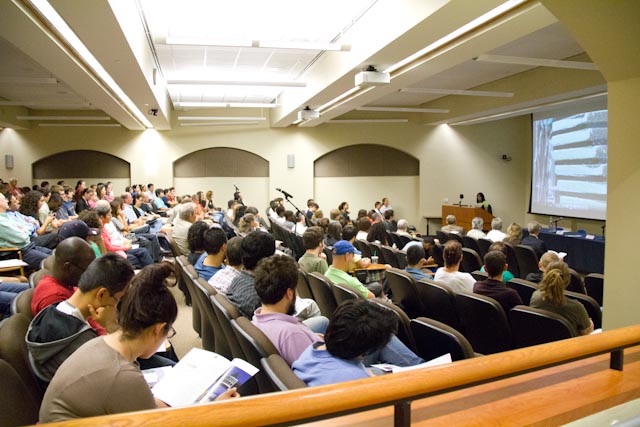Energy Conservation & Residential Consumption

BUILDING KNOWLEDGE FOR ENERGY CONSERVATION: UNDERSTANDING RESIDENTIAL CONSUMPTION PATTERNS BY COUPLING BEHAVIORAL SCIENCES AND TECHNOLOGY
Greatly improving residential energy consumption behaviors begins with developing a clear and well-defined picture of current energy usage. By identifying the types of houses and households that have the most potential to conserve energy, we can deliver cost effective approaches toward energy consumption. The goal is to target specific types of houses with tailored and cost- effective retrofit strategies.
In collaboration with CPS Energy and the National Renewable Energy Research Laboratory (NREL), faculty and staff members at UTSA have been working to model residential energy consumption by examining characteristics of houses and households that are associated with higher and lower levels of energy consumption.
The team has coalesced information about housing structures, such as year built and square footage and about residents, such as income, education, number of people, and age. Analysis of these data will allow for identification of neighborhoods and types of energy customers that hold the most potential for adjusting conservation efforts.
Additionally, using modeling capabilities developed by NREL, the team is building models for all of the major groupings of housing types in San Antonio. With these models, “virtual” retrofits are simulated to determine how much energy could be conserved with the retrofit. Assuming similar gains can be made by applying the same retrofit to other similar structures,
a retrofit strategy can be developed for larger scale energy conservation across neighborhoods.
By exploring household characteristics associated with the different types of housing structures and with higher and lower levels of energy consumption, strategies will be developed and targeted to encourage energy customers to engage in energy conservation related behaviors. Behaviors such as patterns and levels of thermostat setting, decisions about participating in retrofit and rebate programs, and decisions about energy efficiency of appliance purchases, among others are those that might be targeted to advance energy conservation.
By coupling behavioral sciences and technology, our research is creating an intelligent framework to accelerate effective deployment of energy efficiency programs.
This research is making a unique and significant contribution to the field of energy conservation. The findings show where and how cost-effective opportunities can make significant advances in residential energy conservation.
Juan Gomez, Ph.D., P.E., Texas Sustainable Energy Research Institute
Lloyd Potter, Ph.D., Institute for Demographic and Socioeconomic Research
Taeg Nishimoto, College of Architecture UTSA
Institute News
Sort by Title
- Robotic Solar Tracking System
- SCO2 Power Generation for Renewable Energy Extraction
- Secure, Resilient and Smart Grid
- TSERI/CPS 2017 Projects
- Energy Efficiency Online Outreach
- Wind Energy Research
- UTSA Solar Forecasting Research
- Eagle Ford Shale
- STEM Learning through Gaming
- Energy Conservation & Residential Consumption
- Energy Water Nexus
- Electrification of Transportation
- Carbon Capture, Storage, Sequestration and Reutilization
- UTSA SmartLiving Campus
- Large Scale Photovoltaic Integration
- UTSA Installation of Distributed Solar Energy Resources









